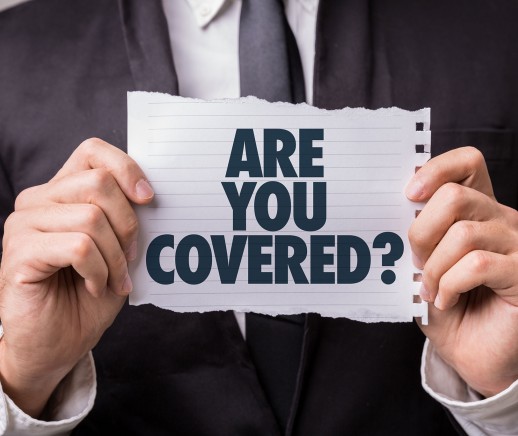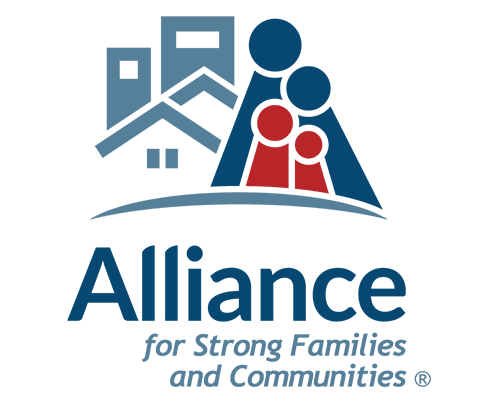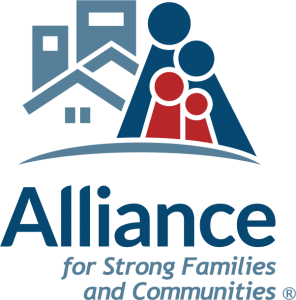Achieving accreditation is recognition that your organization adheres to a higher level of standards; that you are producing high quality services; and are operating at an effective level as recognized by an expert outside agency.
Accreditation – A Bedrock of Risk Management
When insurance companies are considering coverage for an organization, they are generally looking for those that can demonstrate high performance in risk prevention, safety, quality, outcomes, and qualified and competent staff. Accreditation standards often drive good practices in these same areas, particularly with risk management and performance improvement. Thus, the accreditation status of an organization can be indicative of the frequency and severity of costly claims.
Dan Rains, CSP, ARM, Risk Control Manager for Berkley Human Services, offers insight, “Accreditation speaks volumes about the quality of an organization. It demonstrates commitment to a continuous improvement culture with data-driven quality assurance processes and visionary leadership. These are all things that are important from an underwriting perspective which can have long term impact on losses and total cost of risk.”
Sean Conaboy, MSW, MPA, Insurance advisor with NSM Insurance Brokers, Behavioral Healthcare/Human Services Practice provides additional insight. “Insurance companies are interested in how an organization mitigates its risks, and one sound mitigation strategy is national accreditation. That’s why the first questions on an insurance application are regarding both licensure and type of accreditation.”
Accreditation as a Risk Reduction Strategy
By shifting an organization from a reactive stance after an adverse event to an ongoing proactive risk management approach, accreditation can become the bedrock for effective risk control and mitigation. The standards and survey process of accreditation guides an organization in a process of identifying and assessing actual and potential risks as well as implementing activities to prevent occurrence and to reduce severity should there be an occurrence. Connaboy agrees, “When an applicant for insurance notes that they are accredited by a national accrediting body, the underwriter reviewing the application can assume that the organization has a strong infrastructure based on sound risk control activities and practices. At the end of the day, insurance companies want to know how well-run an organization is – and being accredited provides the framework for a well-run organization.”
Additionally, legal conformance and regulatory compliance are universal, risk-reducing requirements of all accrediting bodies. Accrediting organizations also encourage and assist organizations to go beyond what is regulated and strive for a higher level of quality and safety through a continuous improvement process that incorporates monitoring the effectiveness of risk reduction activities as well as outcomes achieved.
Risk Exposures and Controls
Risk exposures and controls are addressed in a variety of ways during the accreditation process, notably in standards and in areas addressed during the onsite survey. Below are some examples of the high-risk exposure areas and controls that may be used to mitigate the exposure.
Risk: Transporting Clients/Persons Served
Control Examples:
- Criteria for authorizing drivers
- Use of vehicle telematics
- Appropriate safety restraints and adequate passenger supervision
Risk: Abuse/Molestation
Control Examples:
- Zero-tolerance policies/Culture of safety
- Criminal background and reference checks
- Mandated reporting policy/procedures
Risk: Cyber Attack
Control Examples:
- Initial and periodic staff training on cybersecurity
- Policies and procedures addressing staff use of computers and passwords (remote access)
- Software protection of information
- Updating computers and backup/recovery procedures
Risk: Lack of Qualified/Competent Staff
Control Examples:
- Policies and procedures for verification of credentials
- Oversight and supervision of staff
- Staff training
- Written job descriptions linking duties/responsibilities to qualifications/competencies
Effective risk controls also include emergency response preparedness. An accredited agency is usually required to have a written disaster plan including, if applicable, evacuation and relocation of staff and clients, as well as specific plans to meet the needs of individuals with disabilities and other special needs during emergencies. The organization must also address coordination with governmental authorities and emergency responders.
Accreditation and the Risk Management Model
The standard risk management model includes identification, analysis, evaluation, and mitigation of risk. Accreditation can help organizations to identify risks they perhaps have not thought about, such as requiring a possible potential disaster be used in an emergency management plan. Requirements to conduct a risk assessment help organizations analyze and evaluate risks to determine how severe or costly they might be and can help identify risk controls to mitigate the risk. Additionally, accreditation helps organizations to reduce or mitigate risk through standard compliance in key areas, such as safety standards, fire code compliance, IT data management, human resources policies, emergency planning, and more.
How Can Accreditation Guru Help?
Although reducing risks is common with accreditation, there are differences in the risk management/risk reduction requirements between the accrediting bodies. Please feel free to contact us to learn more about the differences in risk management standards across the national accrediting bodies.
In addition to helping organizations achieve their accreditation goals, Accreditation Guru’s consulting team is also available to assess your organization’s risk management/risk reduction processes. Our service includes a holistic, systemic assessment of your risk management process or an assessment of one or more specific critical risk exposures.
For more information or questions about the contents of this article, please write or call Jennifer Flowers @ Jennifer@AccreditationGuru.com / 212.209.0240. This post contains original content and was written for Accreditation Guru, Inc. Use of this copy is permitted with credit and reference within the same body of copy to Accreditation Guru, Inc.
Accreditation’s Significance in Time of Crisis
Since late February 2020, child welfare agencies and behavioral health care organizations have been forced to focus on two critical functions – infection control and emergency management. Depending on the services provided and location of the organization, providers have been forced to change their operations in ways that include having all employees work remotely, provide telehealth services or even “closing the gates” and delivering residential services without people going on or off the property.
In these trying times, the framework provided by implementing national accreditation standards certainly helps service providers better manage the necessary pivot in operations and service delivery in this time of crisis.
Accreditation Standards – Detailed Plans and Strategic Safety Net
Accreditation standards that address risk prevention and management, infection prevention and control, performance and quality improvement, technology and information management and staff training are all being put to the test these days.
Effective risk management controls include, but are not limited to, emergency response preparedness. An accredited agency is required to have a written disaster plan for evacuation and relocation of staff and clients, parent-child reunification following a disaster, as well as specific plans to meet the needs of individuals with disabilities and other special needs during emergencies. The organization must also address coordination with governmental authorities and emergency responders. Further, staff needs to be trained on how to respond to medical threats and emergencies and how to handle potential safety risks they may encounter on the job.
Accreditation (maintenance and preparation) guides an organization through a thoughtful, structured and planned process to create an infrastructure for risk management and performance improvement that can be seamlessly implemented during times of crisis like this one.
The accreditation process also helps organizations review and strengthen their policies and practices through compliance with national standards of care. This includes creating processes for gathering and using data for continuous improvement of the quality of the services provided. It is not enough to collect and analyze data related to outputs such as the number of clinical sessions provided or the total number of clients served, but they also must identify, observe and measure the effects of a program’s services on clients.
“Plan and procedures for disaster readiness are a lived concept for CARF-accredited organizations. The readiness mindset of our programs has helped organizations and their staff to transition services to better support children and families during this pandemic.” – Leslie Ellis-Lang, MMFT, Managing Director, CARF Child and Youth Services *
Technology-Based Service Delivery – AKA Telehealth
Due to the pandemic and resulting COVID-19 funding legislation that now expands coverage for telehealth services for Medicaid and Medicare beneficiaries, a vast number of service providers were given the opportunity to make a seemingly overnight shift to employees working remotely and providing telehealth services.
The existing accreditation standards in place that address the management of technology-based service delivery allow companies to reference their strategic plan and immediately embrace the full-time use of this technology.
Any accredited organization that engages or plans to engage service recipients in technology-based service delivery needs to develop policies and procedures to guide telehealth service delivery to address privacy and security measures. They must also assess the appropriateness of technology-based service delivery for each individual and monitor effectiveness of using this model.
Accreditation standards further address competency-based training for personnel on the use of equipment and software, privacy and confidentiality issues, and recognizing and responding to emergency or crisis situations from a remote location.
While many organizations may not have developed a detailed pandemic response plan, wouldn’t it have been helpful to have already addressed and planned for the use of telehealth services and having employees work remotely under the framework of accreditation standards?
Accreditation Drivers
“Accreditation is not just a box to tick and this is even more apparent during times of crisis,” says Jody Levison-Johnson, President and CEO, Council on Accreditation (COA). “COA has standards that address key preparedness and response issues. These fall under the broad standards categories of human resources management, safety and security, and emergency preparedness – all of which are critical during times of crisis.” *
The three major accrediting bodies for human service organizations (CARF International, Council on Accreditation and The Joint Commission) research and develop their unique set of accreditation standards that address a commitment to helping child welfare and behavior health care organizations provide safe and high-quality care, treatment or service. Applying the standards often leads to an increase in consumer confidence in service delivery. Read “Increasing Consumer Confidence Through Accreditation“.
“(The Joint Commission) recognizes the challenges behavioral healthcare organizations are facing during this difficult time and we want to hear from all behavioral health care providers what else we can do to help.” – Julia Finken, Executive Director, Behavioral Health Care Accreditation *
This Too Shall Pass
“This too shall pass” is comforting and indeed it will (or be better controlled). But, as the pandemic stretches on and businesses start to develop a “new normal” for addressing the various health and economic needs of the public at large, a pre-laid foundation of strategic plans and detailed response initiatives can provide a more effective pivot for a company.
Is your organization one of them? By scheduling time to focus on accreditation, you can address key initiatives now and stay ahead of the game in the future. Don’t delay your preparation for achieving accreditation. Develop a work schedule that includes accreditation preparation whether you are applying for the first time or maintaining your status.
Keep Your Momentum Going!
*For additional information from the accrediting bodies:
Addiction Treatment Centers Need Certification to Advertise on Facebook
Last year, Google barred advertisements from appearing in search results for addiction treatment centers in the United States. Starting last month, however, the company allowed centers with LegitScript Addiction Treatment Certification to run ads on its platform.
Now, Facebook recently announced that it will also require that addiction treatment centers achieve certification before they are approved to advertise on its properties, including Instagram and Messenger. LegitScript, a verification and monitoring service for online pharmacies, charges $995 for initial certification and $1,995 for annual vetting.
Google and Facebook’s advertising restrictions stemmed from complaints about addiction centers that targeted people suffering from addiction, offering sub-par clinical services to the highest bidder or making out-of-state recommendations solely to collect a referral fee. Other disreputable addiction treatment centers inflate staff qualifications and engage in improper billing.
Still, it is important to remember that certification represents a lower standard than accreditation. There is no need to rely on random internet searches to find reputable addiction treatment providers: just determine if a given organization is nationally accredited by an independent accrediting agency.
To earn national accreditation, an external panel of experts conducts thorough on-site scrutiny of addiction and human services organizations to ensure that they adhere to the rigorous guidelines and criteria set by the nationally recognized accrediting bodies. The initial process takes up to a year of preparation and organizations must reapply for accreditation every three or four years to maintain the designation.
National accreditation provides independent third-party validation of an organization’s quality of care. Addiction treatment centers and other human service organizations usually tout this status on their websites. Reputable treatment providers can also be found directly on the accrediting bodies’ websites, including The Joint Commission (formerly JCAHO), the Commission on Accreditation of Rehabilitation Facilities (CARF) and the Council on Accreditation (COA).
LegitScript’s certification applies to “any website, application, or merchant that provides information about in-person drug or alcohol addiction treatment, or facilitates in-person or online drug or alcohol treatment, other than at a private residence or non-clinical setting.” Recovery residences that “do not provide clinical services or addiction treatment, provide or purport to provide a cooperative living environment in a non-commercial location (a private residence or similar setting), and are not part of a larger treatment program offered by an addiction treatment provider, are not eligible for certification.”
Read more about the crackdown on addiction treatment advertising online here
The Alliance’s New “Operations Support Services”
As a partner of the Alliance for Strong Families and Communities, Accreditation Guru is excited to share with you their new and game-changing “Operations Support Services” offering for the nonprofit sector. This offering is intended to help leaders address provision of operations support services related to human resources, finance, administrative operations, and more. This is available to ALL nonprofits in the United States, not just Alliance member organizations.
Across the country, daily tasks, ranging from detailed budget reports to regular donor stewardship, siphon limited energy and resources that could be better directed toward program implementation. Because dollars available for overhead functions are particularly scarce, nonprofits should look for smart ways to maximize these resources. For organizations that cannot cost-effectively sustain internal capacity and expertise in administrative functions, the gap will continually widen and plague their abilities to focus and execute on their missions.
The Alliance is dedicated to helping community-based organizations (CBOs) bolster their approach to risk management, improve the effectiveness of fund usage, and understand the benefit of shared services—all of which allow for an increased focus on mission and people served. The “Operations Support Services” offering was created to help fulfill the five identified “North Star” initiatives in the landmark report, “A National Imperative: Joining Forces to Strengthen Human Services in America,” by the Alliance for Strong Families and Communities and the American Public Human Services Association.
By partnering with the Alliance, CBOs can outsource various financial and administrative duties for which internal capacity and resources may be limited. As part of this new venture, the Alliance also is offering competitive and robust benefits packages, enhanced retirement planning services, and comprehensive EAP and work-life services to their employees at a reasonable cost, regardless of their size. In addition, the Alliance’s unemployment tax program combats hidden expenses, avoids claims volatility, and enables better management of cash flow and claim tracking.
The Alliance has established many strategic partnerships to facilitate provision of operations support services that can be customized for any size nonprofit:
- Flexible accounting and bookkeeping assistance delivered directly by Alliance staff
- Comprehensive, competitively priced group health insurance packages offered via industry
leaders that cover thousands of companies and hundreds of thousands of lives - Employee assistance and work-life services from FEI Behavioral Health, the Alliance’s
social enterprise - The ability to provide a wide range of retirement plans and planning services to employees,
with the added value of no administrative fees - A cost-effective alternative to the state unemployment tax system
- Access to group purchasing savings programs
“Along with our expertise in human resources, finance, and administrative operations, it is our intent to enhance and expand our support services to help leaders address needs related to fundraising and development; marketing, public relations, and communications; and information technology,” explains Lenore Schell, Alliance senior vice president of strategic business innovation.
For more information, visit the Alliance’s website.
Why Your Organization Needs Hired & Non-Owned Auto Insurance

Hired & non-owned auto insurance is a highly misunderstood coverage and as a result, often gets put at the bottom of the insurance coverage priority list. Hired and non-owned auto insurance provides coverage for bodily injury and property damage losses caused by vehicles you don’t own, vehicles you lease, hire, rent, and/or borrow, but are used for business operations.
For this discussion, we are going to focus on coverage for vehicles not owned by your organization but used for your operations. Typically, these vehicles are personally owned by employees and volunteers—in other words, non-owned auto.
Organizations that don’t own company vehicles, may automatically think they don’t need auto insurance. Nothing could be further from the truth! If you have employees or volunteers that drive their own vehicles on behalf of your organization, for any reason, then you can become responsible for auto claims. Situations, where your organization may be responsible for damages, can include (but is not limited to):
• Using their own vehicle to go to meetings
• Using their own vehicle to go to the bank, the post office, or other errands
• Using their own vehicle to provide the services offered by your organization
If there’s an accident in any of these circumstances, then your organization can be held responsible and sued for damages. Auto liability claims can have a significant impact on your bottom line. Hired and non-owned auto liability coverage can help absorb potential financial losses and protect your business.
What is Hired & Non-Owned Auto Insurance?
Hired & Non-Owned Auto Liability Coverage is for vehicles owned by employees or volunteers and covers injuries to other people and damage to other people’s property. This is coverage in addition to the coverage an employee or volunteer may already have on their vehicle. It does not cover damage to the vehicles owned by your employees or volunteers, only liability.
In the event your organization is in any way responsible for an accident, a driver’s own auto insurance will be responsible for any claims. However, if the claims are more than the liability coverage limits that the individual has on their personal auto policy, then your non-owned auto insurance could kick in to pay the remainder of the claim. In other words, the employee or volunteer auto insurance triggers first.
Example
The Executive Director of an organization was driving to the bank in their own vehicle to drop off some paperwork for a business loan. She was in a hurry and sped through a yellow light. A car turned in front of her and she hit the driver’s side of the oncoming vehicle. This collision resulted in considerable damage to both vehicles and severe injuries to the other driver.
The injured driver sued the Executive Director and the organization for the damage to his vehicle and his injuries. Because the Executive Director was driving for business, the organization would be responsible for the damages caused by the accident. The total claim was $450,000 including the associated legal fees.
The payments were as follows:
• The Executive Director’s personal auto policy paid up to her limit of $300,000
• The organizations non-owned auto policy paid the remaining $150,000
• The annual premium cost of the non-owned auto Insurance was $350
Auto claims are by far the most frequent type of claim we see, and auto claims involving injury can be quite large. All organizations have some type of driving associated with their mission and general operations. If an organization is deemed in any way responsible for an auto accident, even a small claim can quickly eat up the organization’s reserves and as we’ve seen, a small expenditure for the coverage more than compensates for the potential risks.
Make sure that you include non-owned auto insurance as part of your organization’s risk management arsenal.
~TJ Armstrong, Business Development Manager, Hawley & Associates, LLC






